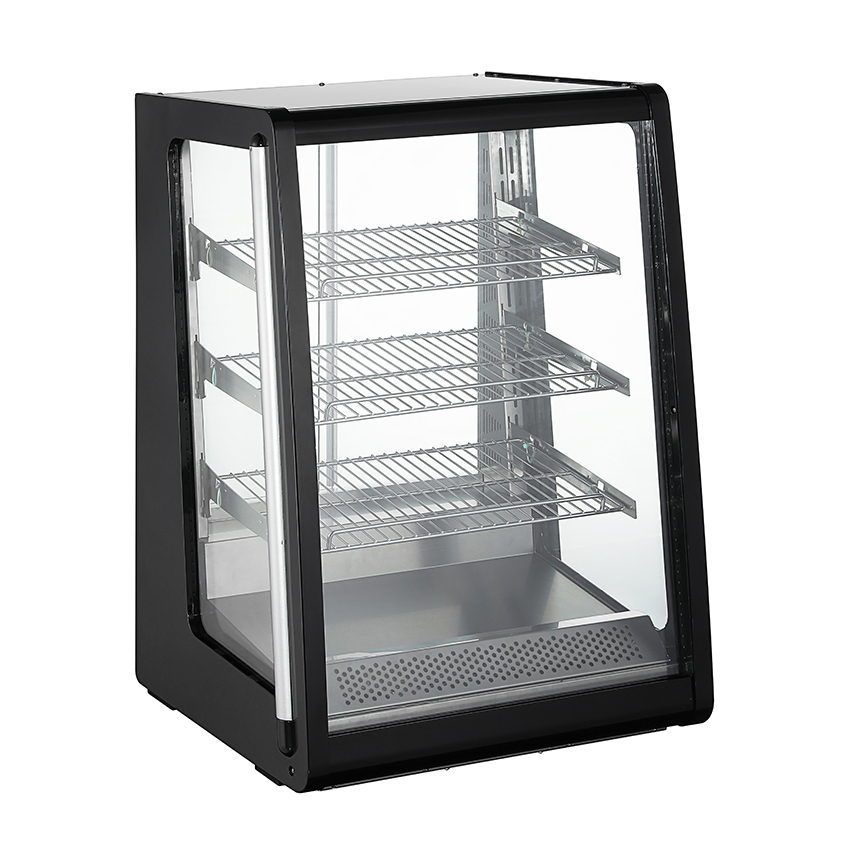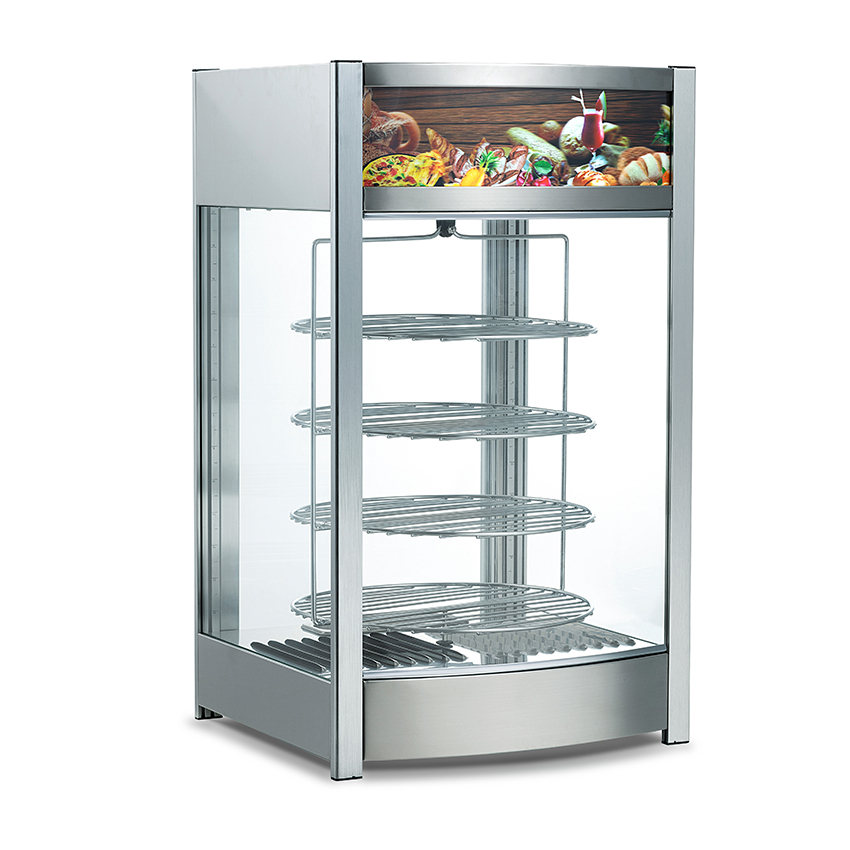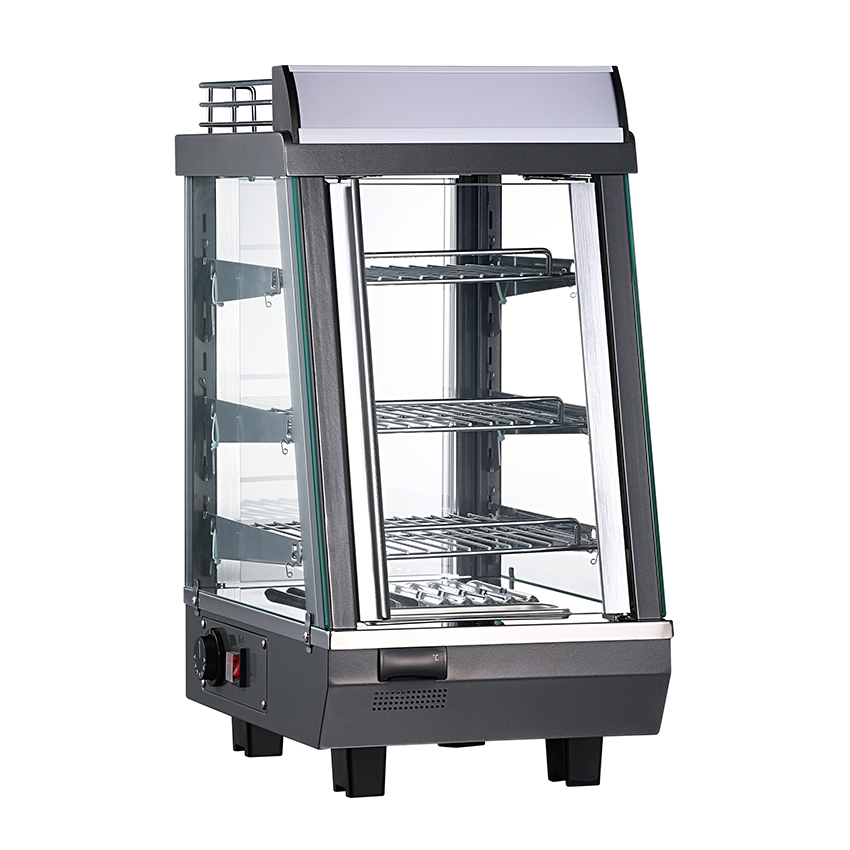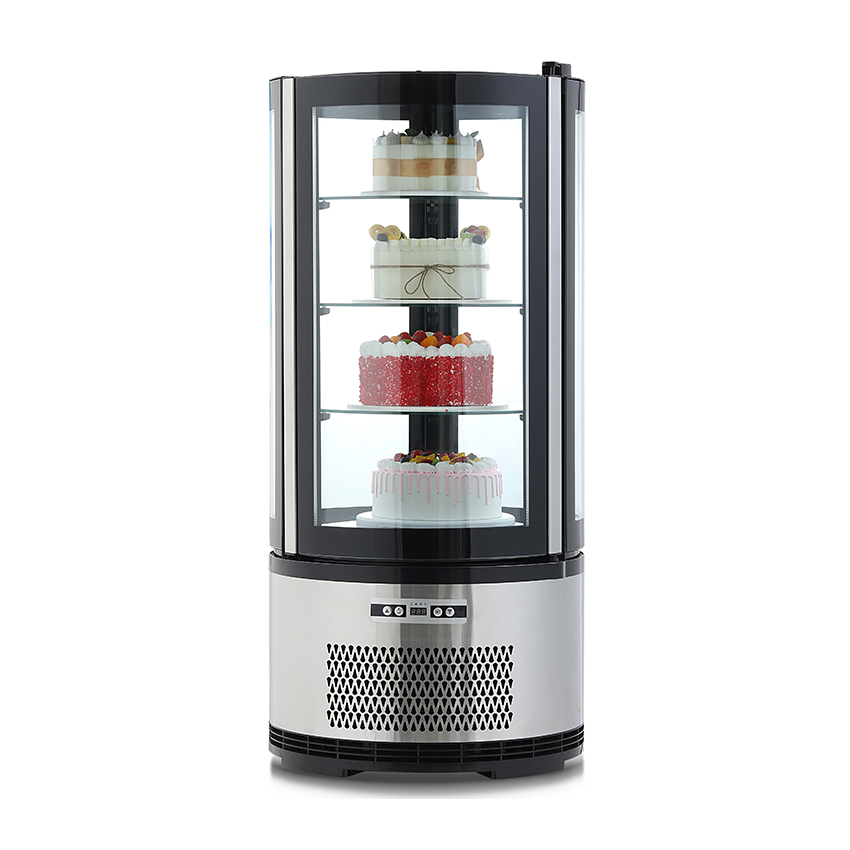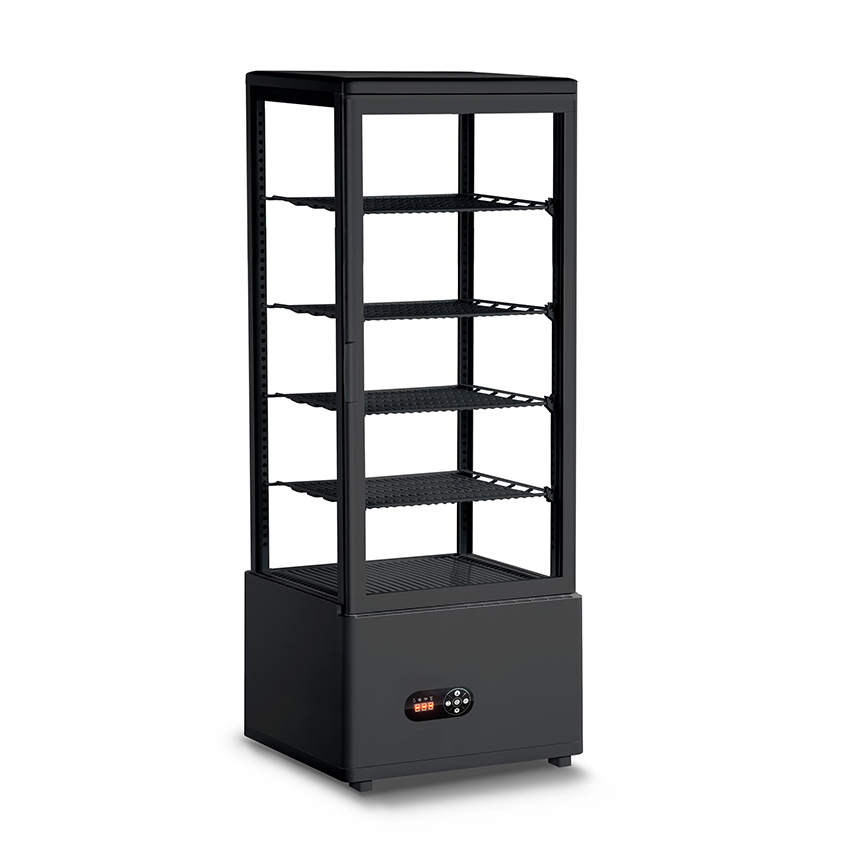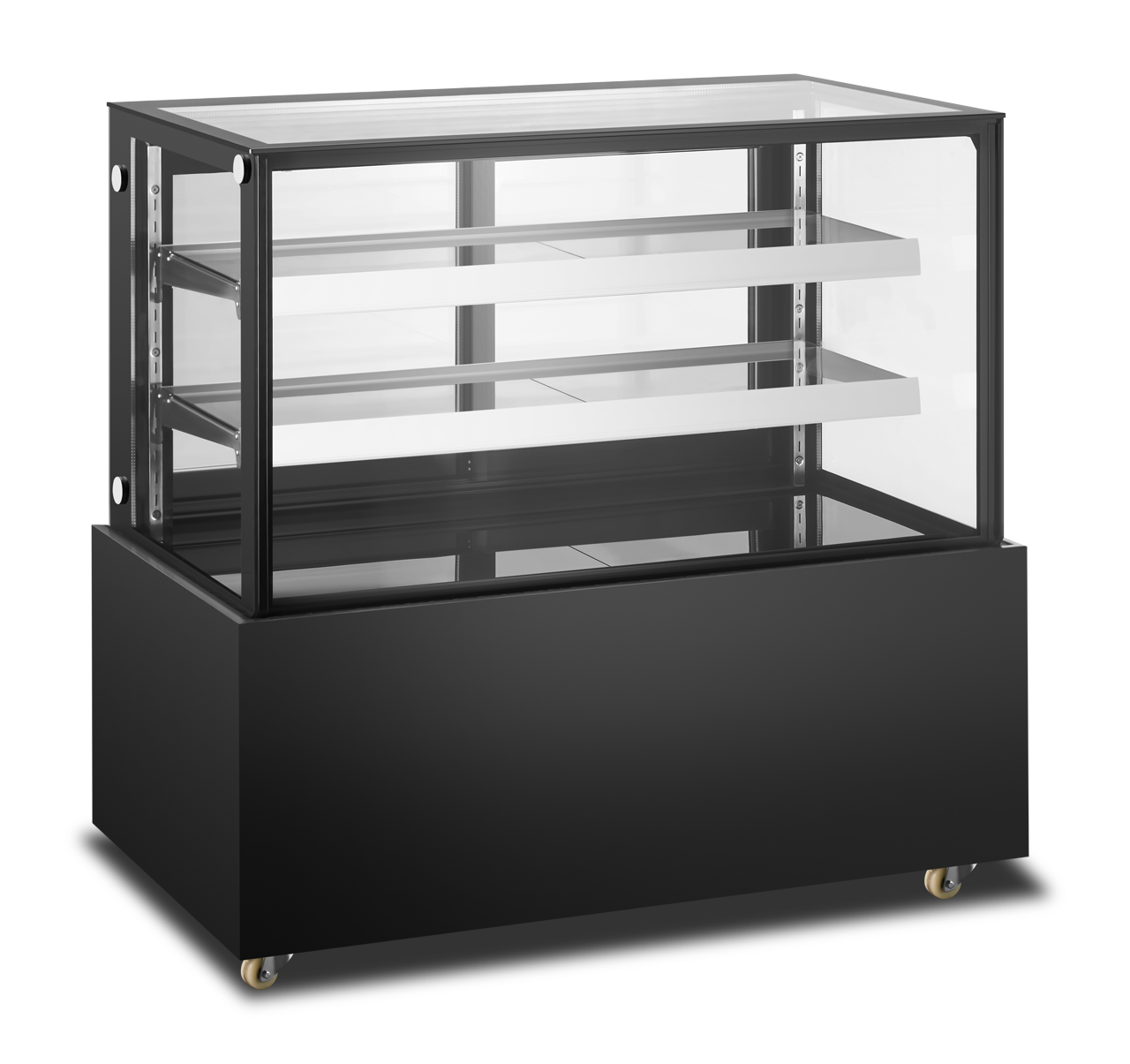1.Functions of Commercial Refrigerated Display Cabinets
Commercial refrigerated display cabinets are key equipment for industries such as catering, retail, and supermarkets, primarily used for food preservation, product display, and enhancing the sales experience.
Food Preservation and Safety
Extending Shelf Life:
Low temperatures inhibit bacterial growth (refrigerated at 0-8°C, frozen below -18°C), ensuring food freshness.
Suitable for perishable foods such as dairy products, meat, seafood, fruits and vegetables, and desserts.
Compliant Storage:
Complies with food safety standards (e.g., HACCP and FDA) to prevent cross-contamination.
Some cabinets are equipped with UV sterilizers or antimicrobial coatings to further reduce the risk of spoilage.
Product Display and Promotion
Enhancing Product Appeal:
Transparent glass doors/open design allow for intuitive display of products (e.g., cakes, sashimi, ice cream).
LED lighting (4000K natural light) enhances product color and stimulates purchase.
Categorized Display:
Multi-level partitions allow for the placement of different products (e.g., beverages on the top, dairy products on the bottom).
Sliding trays/adjustable shelves accommodate varying package sizes.
Improved Operational Efficiency
Convenient Access:
Open counters (such as convenience store freezers) allow customers to select items themselves, reducing staff workload.
Commercial-grade universal wheels allow for easy mobility and layout adjustments.
Energy Savings:
Inverter compressor + high-efficiency insulation (polyurethane foam) saves 30% to 50% more energy than traditional freezers.
Intelligent temperature control system automatically adjusts cooling power to reduce energy consumption.
2. Precautions for using commercial refrigerated display cabinets
Installation and Placement
Location Selection
Avoid heat sources (>1.5 meters from oven/stovetop)
Avoid direct sunlight (UV rays accelerate aging of the seal)
Ensure the floor is level (a tilt >5° can affect compressor operation)
Space Reserve
Back heat dissipation area ≥10 cm
Top clearance ≥30 cm (≥50 cm for air-cooled models)
Daily Use
Loading Guidelines
Capacity ≤80% (reserve space for cold air circulation)
Let hot food cool to room temperature before adding (to prevent compressor overload)
Liquids should be stored in a sealed container (to prevent evaporation and frost)
Door Opening Management
Single door opening time <30 seconds
Install P VC soft curtains can reduce air loss by 30%. Use a separate pickup window during peak hours.
Cleaning and Disinfection
Standard Procedure:
Empty the cabinet after powering off.
Wipe the interior with a neutral detergent (do not use strong acids or bases).
Clear the drain holes with a fine wire (once a month).
Disinfect the sealing strips with an alcohol pad (twice a week).
Key Areas:
Evaporator fins (dust accumulation reduces cooling efficiency by 30%)
Door hinges (prone to mold growth).
Energy-Saving Tips
Raise the temperature by 1-2°C at night (outside business hours).
Apply anti-fog film to the glass doors (reduces cleaning frequency).
Dust the condenser monthly (can save 15% electricity).
3. Fault emergency handling
|
Symptom |
Possible Cause |
Solution |
|
Severe frost on cabinet |
Door seal not tight/defrost failure |
Replace seal/manual defrost |
|
Continuous alarm |
Exceeding temperature/power supply abnormality |
Move food and contact customer service |
|
Water accumulation at bottom |
Drain pipe clogged |
Flush pipe with warm water |


 English
English русский
русский Español
Español Français
Français عربى
عربى italiano
italiano
